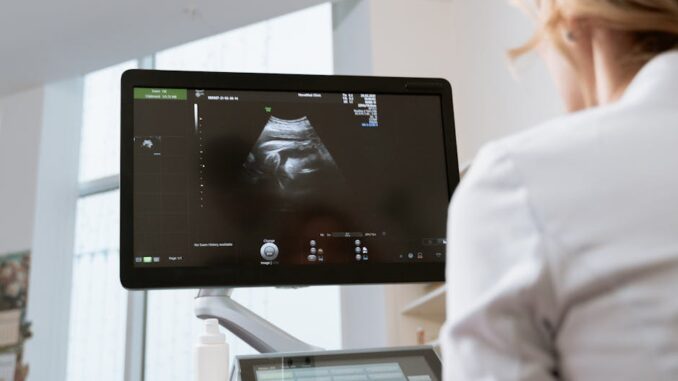
In the realm of pediatric healthcare, early and accurate diagnosis of tuberculosis (TB) remains a formidable challenge. Traditional diagnostic methods often fall short, especially in low-resource settings where access to advanced imaging technologies is limited. However, recent advancements in artificial intelligence (AI) have paved the way for innovative solutions.
AI-Powered Lung Ultrasound: A Game Changer
A pioneering study presented at the European Society of Clinical Microbiology and Infectious Diseases (ESCMID) Global 2025 conference introduced the ULTR-AI suite, an AI-driven lung ultrasound system. This system analyzes images from portable, smartphone-connected ultrasound devices, offering a rapid, non-invasive, and cost-effective alternative for TB detection. Remarkably, the AI model demonstrated a 9% improvement in diagnostic accuracy over human experts, achieving a sensitivity of 93% and specificity of 81%. (emjreviews.com)
Healthcare data growth can be overwhelming scale effortlessly with TrueNAS by Esdebe.
Implications for Pediatric Care
The application of AI-guided lung ultrasound in pediatric TB diagnosis holds significant promise. Children often present with atypical TB symptoms, making diagnosis challenging. The portability and ease of use of the ULTR-AI system enable healthcare providers, even with minimal training, to perform accurate diagnostics at the point of care. This is particularly advantageous in underserved areas where access to radiologists and advanced imaging equipment is scarce. (icthealth.org)
Real-World Applications and Training
In a study conducted in Benin, West Africa, the AI-guided lung ultrasound system was integrated into a mobile app, providing instant diagnostic results while the patient was still with the healthcare provider. This immediate feedback reduces the chance of patients dropping out of the diagnostic pathway and strengthens the link between diagnosis and care. (icthealth.org)
Training healthcare workers to effectively use this technology is crucial. A comprehensive training program, including didactic sessions, hands-on practice, and computer-based exams, has been developed to ensure proficiency in performing pediatric lung point-of-care ultrasound (POCUS) examinations. This approach aims to standardize the use of AI-guided POCUS across various healthcare settings. (pocusjournal.com)
Challenges and Future Directions
Despite the promising results, several challenges remain. The variability in sensitivity and specificity across different studies suggests that further research is needed to establish standardized protocols for acquiring and analyzing POCUS images for TB detection. Additionally, ensuring the integration of AI-guided ultrasound systems into existing healthcare infrastructures requires careful consideration of technical, ethical, and logistical factors. (pubmed.ncbi.nlm.nih.gov)
In conclusion, the advent of AI-guided point-of-care lung ultrasound systems represents a significant advancement in the diagnosis of pediatric tuberculosis. By providing a rapid, non-invasive, and cost-effective diagnostic tool, this technology has the potential to transform TB triage, particularly in resource-limited settings. Ongoing research and training initiatives are essential to fully realize the benefits of this innovation in pediatric care.
References


The integration of AI into mobile apps for immediate feedback in West Africa highlights the potential for real-time diagnostics to improve patient retention in the care pathway. Further exploration of culturally sensitive and language-specific AI training modules could enhance adoption and effectiveness in diverse communities.
Great point! Focusing on culturally sensitive AI training is crucial. Imagine AI that speaks the local dialect and understands cultural nuances – it could drastically improve trust and adoption of these technologies. This localized approach could be a game-changer for healthcare in diverse communities.
Editor: MedTechNews.Uk
Thank you to our Sponsor Esdebe